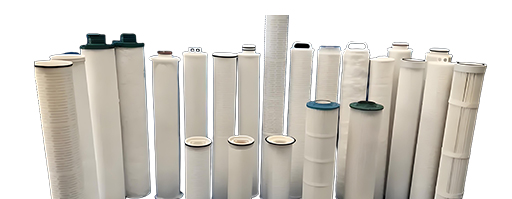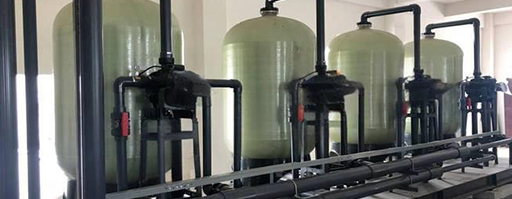Overview
Introduction
Reverse osmosis is a membrane separation technology that uses pressure as the driving force by means of a selective permeability (semi-permeable) membrane. When the pressure added in the system is greater than the osmotic pressure of the incoming water solution, water molecules continuously pass through the membrane, flow into the central tube through the water production channel, and then flow out at one end. Impurities in the water, such as ions, organic matter, bacteria, viruses, etc., are trapped on the inlet side of the membrane, and then flows out at the outlet end of the concentrated water to achieve the purpose of separation and purification.

Features
1. Large water permeability and high salt rejection rate. Under normal circumstances ≥98%
2. It has a high interception and removal effect on organic matter, colloids, particles, bacteria, viruses, heat sources, etc.
3. Low energy consumption, high water utilization, and lower operating costs than other desalination equipment.
4. There is no phase change in the separation process and it is reliable and stable.
5. The equipment is small in size, simple to operate, easy to maintain, highly adaptable and has a long service life.
Working Principle

Application
Food and beverages
Electronics industy
Sea Water Desalination
Medical industry
The chemical industry
Power Generation
Product Range
One and Two-stage RO System
In a one stage RO system, the feed water enters the RO system as one stream and exits the RO as either concentrate or permeate water.
In a two-stage system the concentrate (or reject) from the first stage then becomes the feed water to the second stage. The permeate water is collected from the first stage is combined with permeate water from the second stage. Additional stages increase the recovery from the system.

Single Pass RO and Double Pass RO
Think of a pass as a stand alone RO system. With this in mind, the difference between a single pass RO system and a double pass RO system is that with a double pass RO, the permeate from the first pass becomes the feed water to the second pass (or second RO) which ends up producing a much higher quality permeate because it has essentially gone through two RO systems.
Besides producing a much higher quality permeate, a double pass system also allows the opportunity to remove carbon dioxide gas from the permeate by injecting caustic between the first and second pass. C02 is undesirable when you have mixed bed ion exchange resin beds after the RO.

Data Sheet
| PARAMETERS | UNITS | |
| Permeate production capacity of the desalination block, up to* | l/day | 30000 |
| Operating pressure in Hydraulic System | bar | 40 - 65 |
| Total dissolved solids, permeate (TDS) | mg/l | <500 |
| Feed water system pressure | bar | 3 – 5 |
| Total dissolved solids range, feed water (TDS) | mg/l | 30000 – 48000 |
| Source water flow rate | m³/h | 3.0 – 3.4 |
| Feed water temperature | °С | from 5 to 40 |
| Ambient temperature | °С | from 5 to 50 |
| Energy consumption per 1 hour | kWh | 4.8 |
| Energy consumption per 1 m3 of permeate* | kWh | 3.8 |
| Salt rejection, up to | % | 99.8 |
| Membrane area | ㎡ | 40.6 |
Related Product

RO membrane











